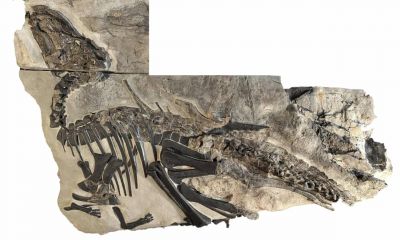Paleontologists in Italy have discovered the largest and most complete dinosaur skeleton in the country’s history, along with the fossilized remains of a herd of 11 dinosaurs that are rewriting history. Singular dinosaur remains have been found scattered throughout Italy since the 1990s, but the discovery of multiple skeletons in a single place is significant. “Italy is not known for dinosaurs and, although we had a few lucky strikes in the past, now we have a whole herd at one dinosaur site,” Federico Fanti, a professor at the University of Bologna and the lead researcher on the site, told The Guardian. Experts had previously believed the ancient Mediterranean area was unsuitable for large animals like dinosaurs, given it was formed by small islands far from major mainlands like Europe, Africa, and Asia. The remains have been identified as belonging to the species “Tethyshadros insularis,” which roamed the earth about 80 million years ago, according to Fanti’s research, published in the journal Nature. Villaggio del Pescatore, a former limestone quarry just outside of the Italian city of Trieste, where the fossils were found, first became associated with dinosaurs in 1996 when paleontologists stumbled upon a skeleton they named Antonio, initially identifying him as a “dwarf species.” But Fanti’s discovery now calls that one into question, and it is now believed that Antonio was a young dinosaur part of the recently discovered herd, which appears to have died together. The remains of fossilized fish, crocodiles, and shrimp have also been found at the site.
I paleontologi hanno scoperto il più grande e il più completo scheletro di dinosauro nella storia italiana. Hanno trovato anche i fossili di una mandria di undici dinosauri. Questa è la prima volta che è stata scavata questa quantità di scheletro in solo un posto. La mandria è parte della specie “Tethyshadros insularis”, che visse sulla Terra più di 80 milioni di anni fa. I fossili sono stati trovati al Villaggio del Pescatore, un paesino fuori Trieste. È la stessa posizione dove altri scheletri furono scoperti negli anni passati. I paleontologi pensano che Antonio, un dinosauro trovato nel 1996, facesse parte di questa mandria.



